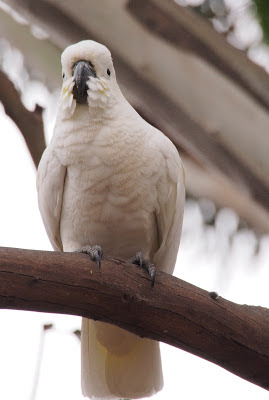To make my opposition to legalised hunting in NSW National Parks clear, I have sent the following letter to:
Hon.
Robyn Parker MP, Minister for Environment and Heritage office@parker.minister.nsw.gov.au
Our birds and animals cannot enter this debate. Please write on their behalf.
Megan
Dear
It’s my belief that a legal hunting season
in NSW National Parks is a very poorly considered decision. My concerns are for the
safety of park users. Additionally I am
concerned about the stress that will be caused to native birds and animals and
I have serious long term environmental concerns.
We all know that gun deaths occur where guns are used. In
Italy 13 people were killed in hunting
accidents and 33 wounded in the first six weeks of the 2012 shooting season1. /http://www.npansw.org.au/ Can your government afford a single hunting season gun death? Can you? Who do you imagine will die first? A father, a son, or a brother in a
shooting party? Or pehaps bushwalker who walks
into a park unsuspectlingly? Or is a foreign national more likely? It’s well
known that people of non-English speaking
backgrounds are overrepresented among drowning deaths in this country.” http://www.mattthistlethwaite.com.au/media/press-releases-%281%29/senator-urges-non-english-speakers-to-take-care-af/ Will your government be more successful at warning non English speakers of dangers in National Parks than successive governments have been in warning of the dangers of the surf? And just how will your government
close all the access roads to National Parks and make it known to all when
shooting season is on?
As an appreciator of Australian nature I am
also concerned for the stress caused to
birds and animals while shooting season occurs. If it is documented that the
presence of a photographer might put birds off breeding in an area, can you
imagine the disturbance caused by shooting? As the birds and animals are silent
in this debate, you must try to consider more than one perspective. And who or
what is to stop a shooter taking potshots at protected Australian species? Life
is tough enough for many species without a legal shooting season to content
with.
Furthermore irresponsible game
shooters are well known to actively introduce target species to areas in which
they are allowed to shoot. This has been cited often as a reason for the
numbers and extent of deer, pigs and perhaps goats that are now pests in public
and private land throughout eastern Australia.
Some of the reserves in which
shooting is soon to be allowed are quite small and isolated by surrounding
cropland. The temptation to release just a few piglets, goats or deer in
such reserves will be irresistible to a minority of shooters. What could
be more attractive to a not-so-thoughtful shooter than a local ‘private’
hunting ground? Many of these reserves currently support few or
uninteresting feral species, so that the pressure to augment feral stocks will
be great.
What is a keen hunter going to do
in the unlikely event that his local hunting ground (National Park or Nature
Reserve) appears to be running low on 'stock'? Where is the vested
interest for shooters to actually eliminate any feral animals at all? On the
contrary, there is a considerable motivation to increase the number of feral
animals so that they can be seen to be 'doing more' and being a more impressive
part of the 'solution'. Personal interest is completely opposed to the
professed objectives of the policy.
Given we already know that feral
translocation by shooters has occurred extensively in the past and largely if
not entirely caused the present problem, any legislation that encourages such
introductions to areas of even higher conservation value is an appalling,
unforgivable change. Together with the certainty that some native animals
will be accidentally shot and the fact that general recreational hunting has
never been shown to control any feral species in any location in Australia, what
is the justification that allows changing the law? We are faced with a
lose-lose and yet one more 'lose' for our limited remaining native species.
Has the government included
consideration of the problem of deliberate feral translocations into national
parks and reserves, and if so, what evidence was used to decide the new laws
would not make the situation worse than it is now?
In anticipatation of your reply to these issues.
Sincerely,

























